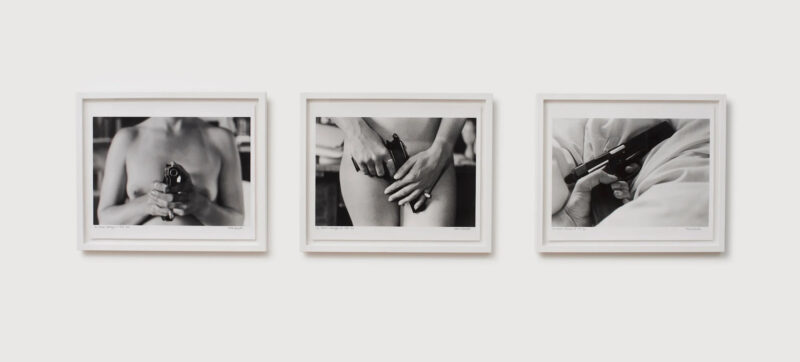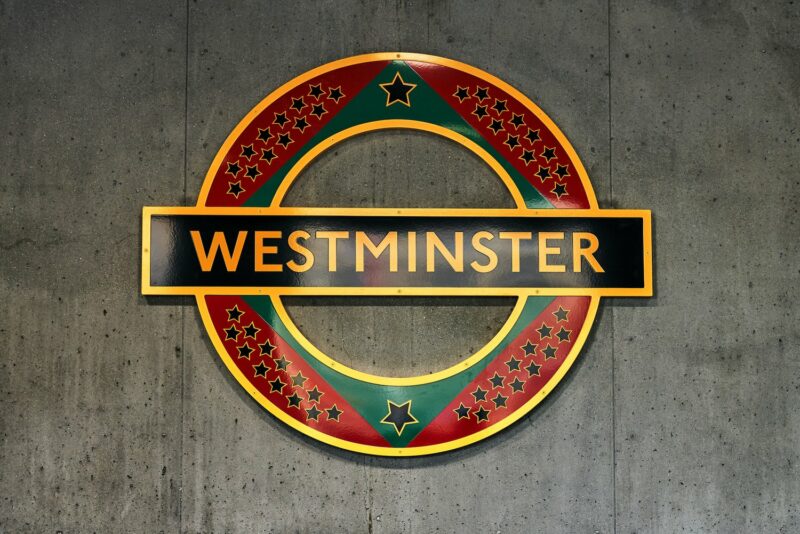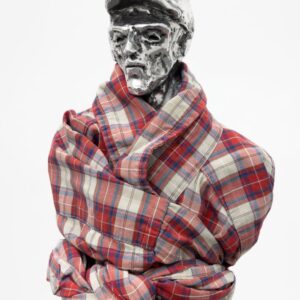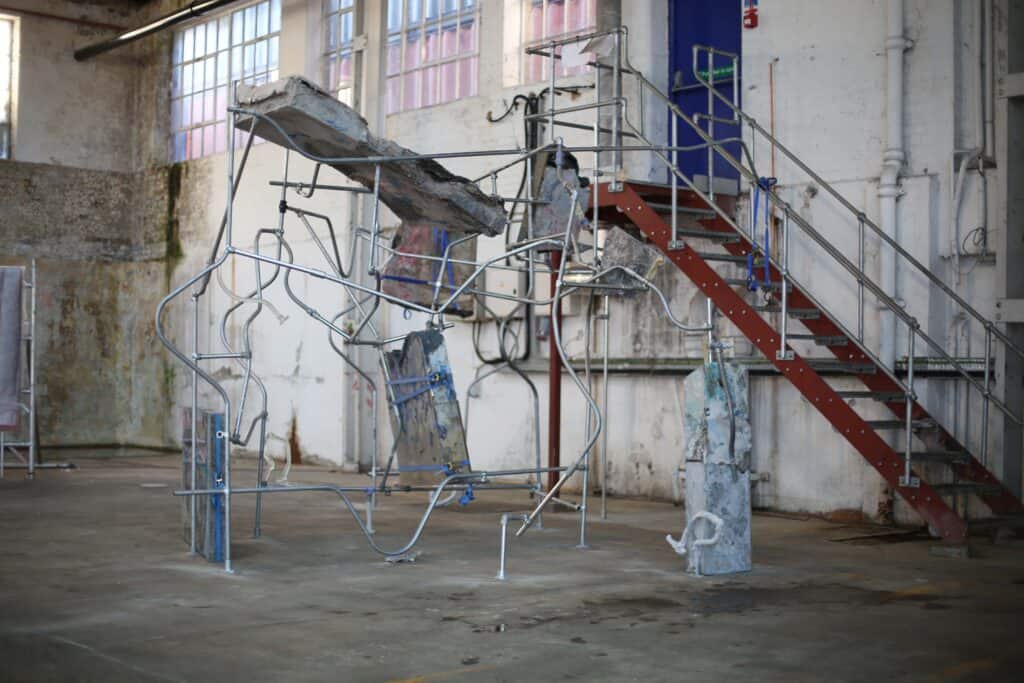
If you are wondering whether to visit The Factory Project, you’ll want to know about the practicalities, and the quality of the art.
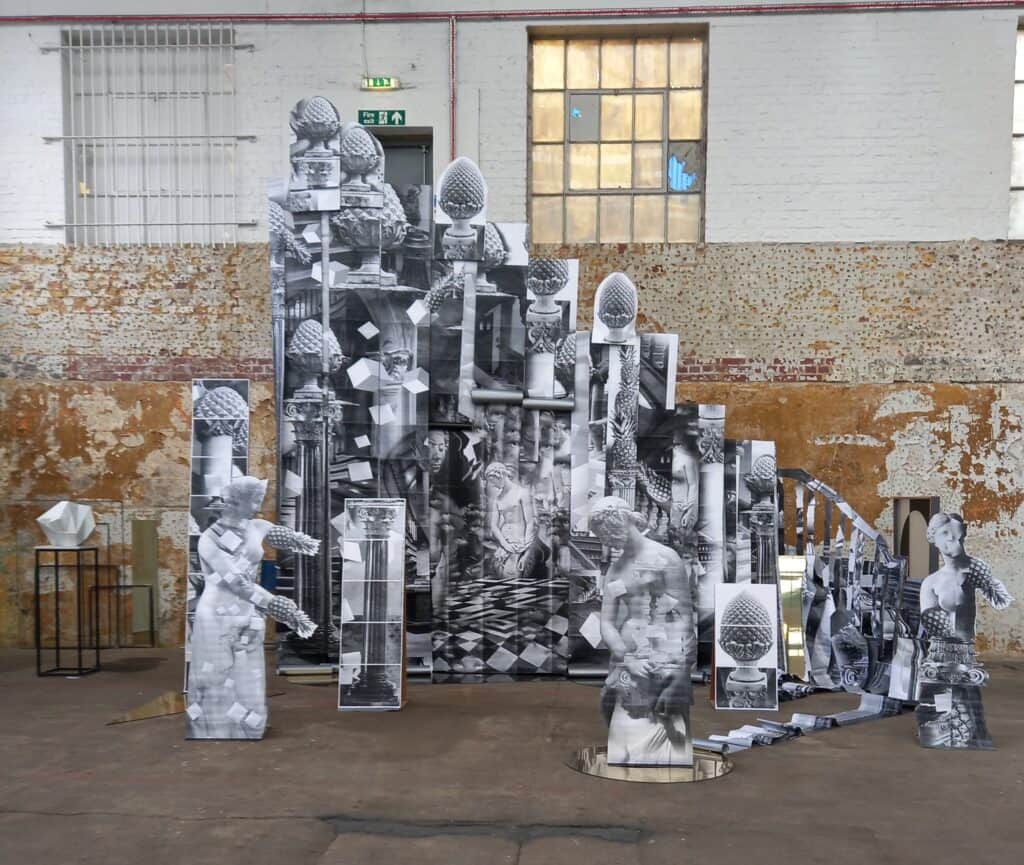
Ten curatorial projects, concentrating on artist-run initiatives that don’t have access to their own space, are shown in a large hall, a vast warehouse and the connecting yard – all part of an underused factory complex in the Thameside Industrial Estate. There isn’t much parking, but it’s pretty easy to reach by public transport: take the DLR to Pontoon Dock followed by a simple ten minute walk. Look out for small notices with arrows just before the factory gates. You need two hours to do over 100 artists justice, so bear in mind that there are no refreshments on site. Information is a bit patchy, but there are curators on hand and ready to help.
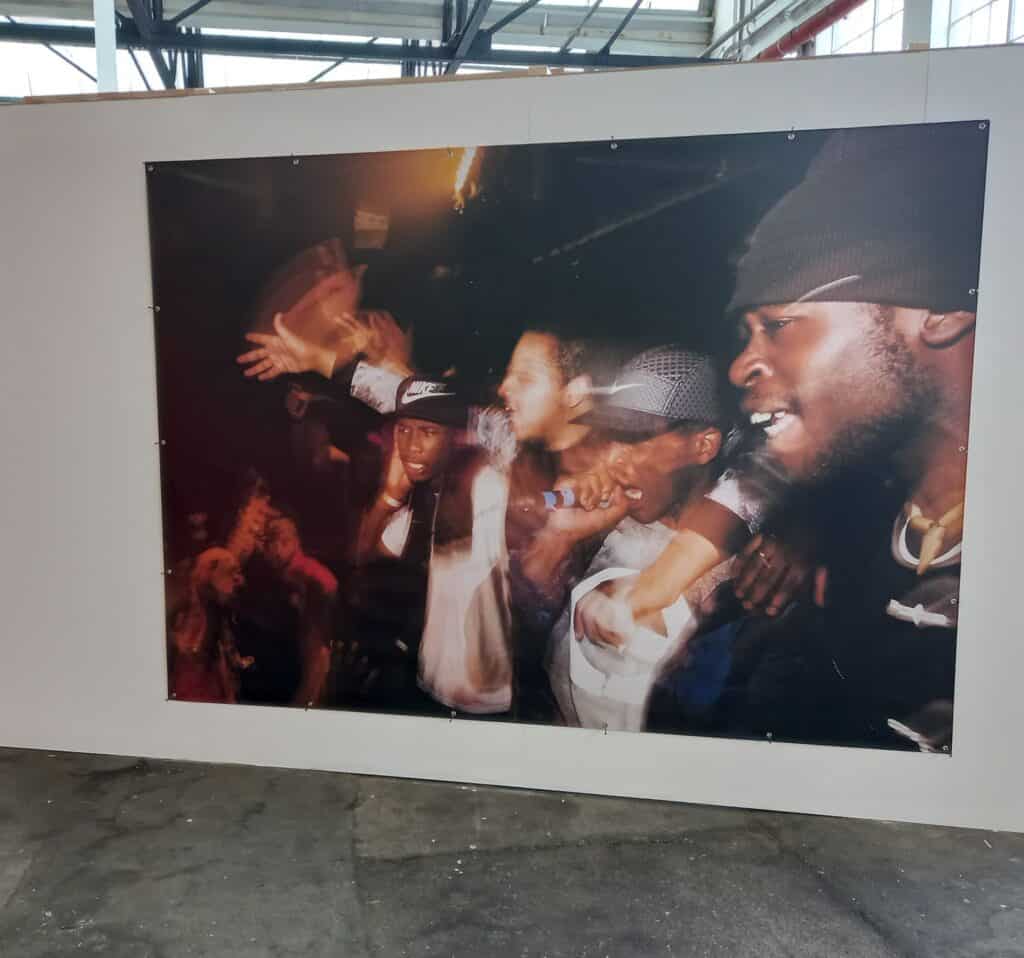
The setting is atmospheric and suits the big sculptural installations that are much of what you’ll see: they allow artists to expand their practices in all senses, and make for a timely and welcome antidote to the 2D world of the locked down screen. You won’t miss Juliette Mahieux Bartoli’s wafting towers of silk cyanotypes patterned by spacecraft designs; Sasha Bowles’ site-specific panoramic relief on the history of the sugar industry; or Catriona Robertson’s cunning imitations of the tubular staircase into the construction she runs up against it. C Dyer maximises the size and impact of a photograph capturing the energy of rap DJs through the somewhat paradoxical means of a long exposure. And skips prove an assertive frame for art, as presented by – naturally – SKIP Gallery. Lucy Gregory makes her skip a site for revolving legs; Ally Rosenberg cuts sperm out of bricks in his, punning on the human clay; Michael Johansson elegantly constructs a skeletal skip out of quotidian items that, though new, might end up in one.
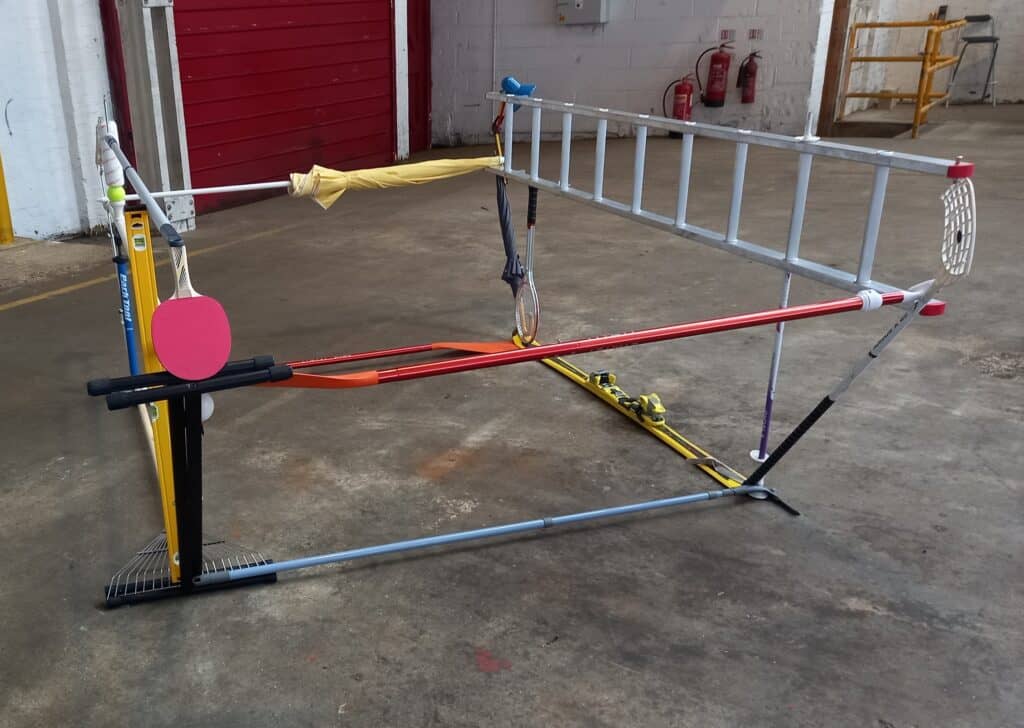
There are also smaller, quieter works repaying attention. Look out for Liam Fallon’s way of queering materials as a means of exploring gender stereotyping in ‘Core Strength’, which looks like a foam children’s character but proves to be other; Alexei Izmaylov’s Freudian merger of sex toys and dog toys; and Luke Silva’s darkly poignant set of paintings of items from Tomb Raider as evocations of his virtual refuge from an unhappy childhood.
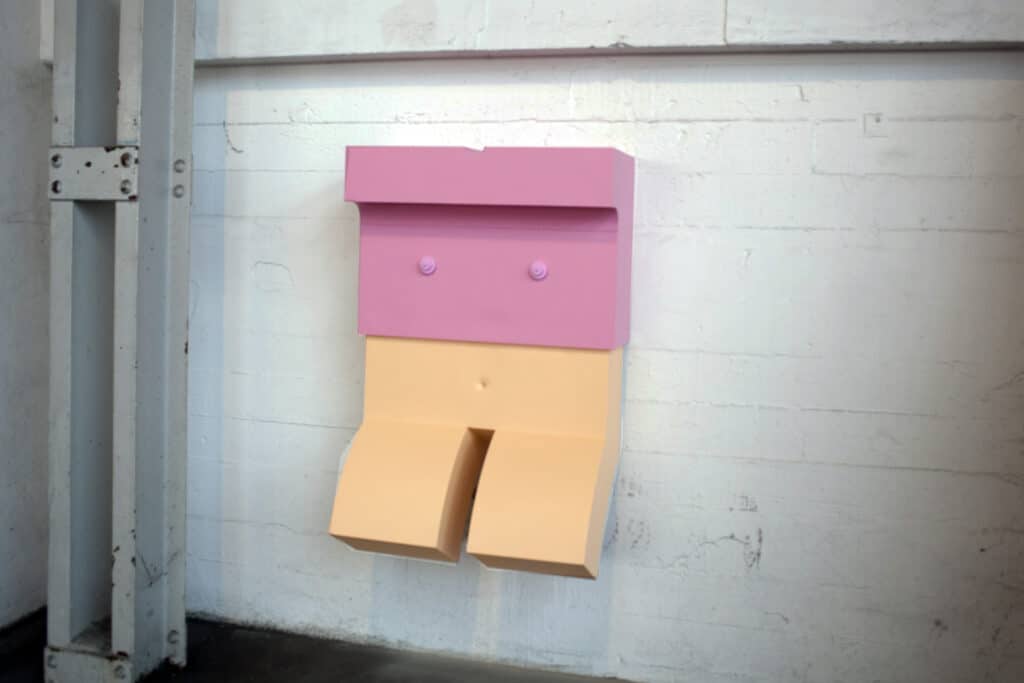
Of course it’s a bit hit and miss: not much comes across in general from the theming of works – Rosalind Davis’s ‘Trace Element 1971’, exploring material inheritance, and Haze Projects’ ‘Peach Fuzz’, set at the increasingly contested boundaries between nature and artifice, are perhaps the clearest. The quality of work varies, inevitably, and some seem to use scale for the sake of it. Asking artists to intervene on doors for ‘Between Frames’ proves lightweight up against the skips. Overall, though, The Factory Project makes for a very worthwhile, enjoyable – and free! – trip, even without the energising addition of the opening performances. That programme was very popular last Saturday, and there are plans for more performances this coming weekend.
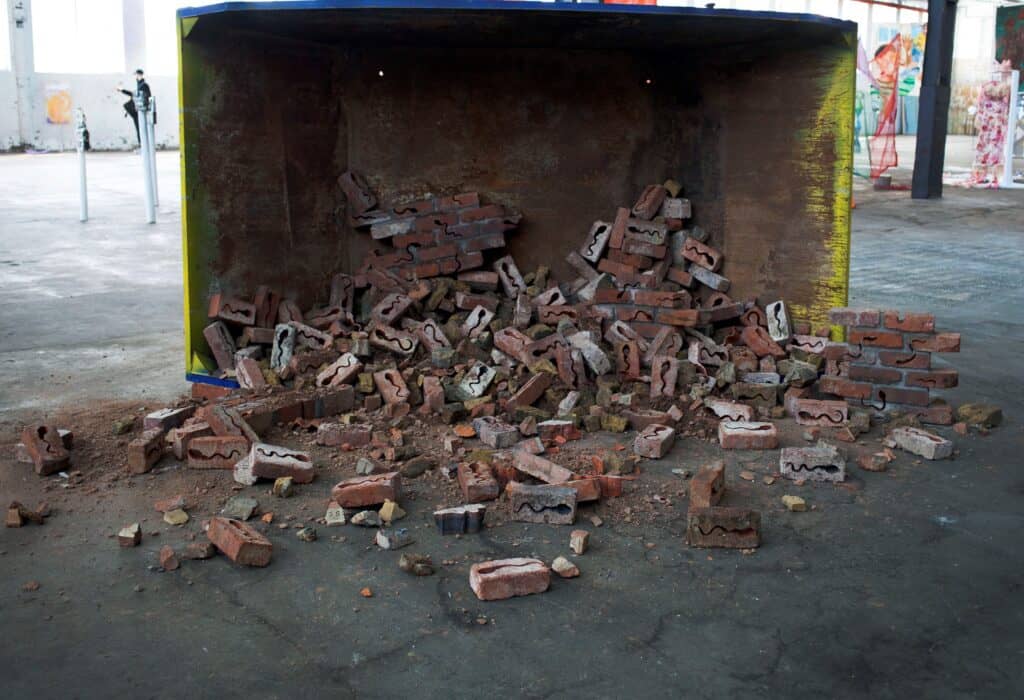
The Factory Project is at the Thameside Industrial Estate, in North Woolwich, running daily to 22 Oct. It is produced by Eric Thorp and Nicholas Stavri (Thorp Stavri) and is curated by Backhaus Projects, Delphian Gallery, Gallery No.32, Haze Projects, Jerome, Pacheanne Anderson, Recreational Grounds, Rosalind Davis, Skip Gallery and Thorp Stavri.
Paul Carey-Kent


